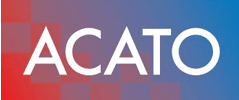Comprehensive Guide to SIEM as a Service for Enhanced Security
A SIEM as a Service enables you to introduce Security Information and Event Management (SIEM for short) into your company without your own staff. The main focus is on the early detection of cyber attacks through permanent data collection and analysis. As a strategic security component, SIEM systems are integrated into professional SOC as a Service. Here we would first like to explain to you what a SIEM is, why you need it and what it is useful for.
Understanding SIEM: What It Is and Its Importance in Cybersecurity
In the following video you will learn more about the topic of SIEM and how you can use a “SIEM as a Service” in your company:
As you learned in the video, there are various aspects to consider when introducing and operating your own SIEM. In the following text, we have briefly summarized the most important points.
What does a SIEM do?
A SIEM is a technical solution to proactively detect and combat threats. In the event of a threat, you must be able to take the right countermeasures to suit the type of threat. Cyberattacks can consist of a specific advance and several diversionary measures to distract the company being attacked. This allows cyber spies and cyber criminals to work on the target object in peace and quiet. In this way, perpetrators steal large amounts of data without encountering any resistance. A SIEM is intended to put an immediate end to this activity. In the real world, cyber criminals attack with the help of a bot network. This paralyzes the entire bandwidth of the company. Without a SIEM, attackers would block everything until their systems are weakened enough. A SIEM offers the following functions:
- Proactive 24/7/365 threat detection
- Permanent analysis of the threat situation
- Highly efficient threat investigation by analysts
- Direct initiation of measures to ward off cyberattacks
- SIEM, incident response management, compliance management
- IT forensic analysis if required
- Protection for all assets (on-premise, home office, cloud, Office 365 and much more)
Why use a managed SIEM?
A managed SIEM offers permanent recording (24×7) of security events. It is called “managed” because the monitored company has this task carried out entirely by an external service. Therefore, a managed SIEM is an important part of a SOC as a service. This gives your company the desired transparency and visibility. In doing so, you meet the requirements of the ISO 27001:2022 standard and the NIS 2.0 directive to a high degree. The following aspects speak in favor of using managed SIEM as part of your SOC defense strategy:
- Fault-tolerant threat detection
- More valid detection through data correlation
- Real-time and retrospective detection
- Continuous optimization of visibility
- User Entity and Behavior Analytics (UEBA)
- Machine learning, threat feeds, honeypots and much more
- Proven and secure (Gartner, EAL 3+)
- Highly scalable and cost-transparent
Why is threat analysis necessary for cybersecurity?
Organizations must continuously conduct threat analysis to better understand their risk potential. The further development of the entire detection and analysis processes is crucial for modern protection of the organization. If you want to operate a SIEM in your own SOC, you must take the following main activities to maintain your defenses:
- In-depth threat investigation by analysts
- Malware analysis (sandboxing, reverse engineering)
- Inclusion of a wide variety of threat information (threat feeds, IoCs and much more)
- Qualified assessment of possible threats by analysts
- Interdisciplinary knowledge exchange
How does a SIEM as a Service enable effective threat defense?
With a SIEM you can achieve effective threat defense. Your company is then able to initiate defense measures and isolation against the threat directly. If you have the necessary personnel and technology, you can achieve particularly fast reactions with your own SIEM so that the attacker cannot overcome your protective wall. With a SIEM as a service you can leave this to a rapid response team so that you can enjoy your weekend or Christmas roast in peace. A SIEM as part of a SOC takes the following effective defense measures for you:
- Development of complex IR plans (playbooks, runbooks)
- Multi-stage process flow (containment – eradication – recovery)
- Direct initiation of defense measures by analysts
- SOAR use for efficient coordination of defense measures
- Comprehensive incident response management
- Crisis management
- Crisis communication
Why do companies need a SIEM?
The European regulation on data protection (GDPR) and digital operational security (NIS 2.0) requires companies to be better prepared for possible cyber threats. Taking out cyber insurance does not meet the requirements of legal regulations (GDPR and NIS 2.0) and standards (ISO 27001 / TISAX).
